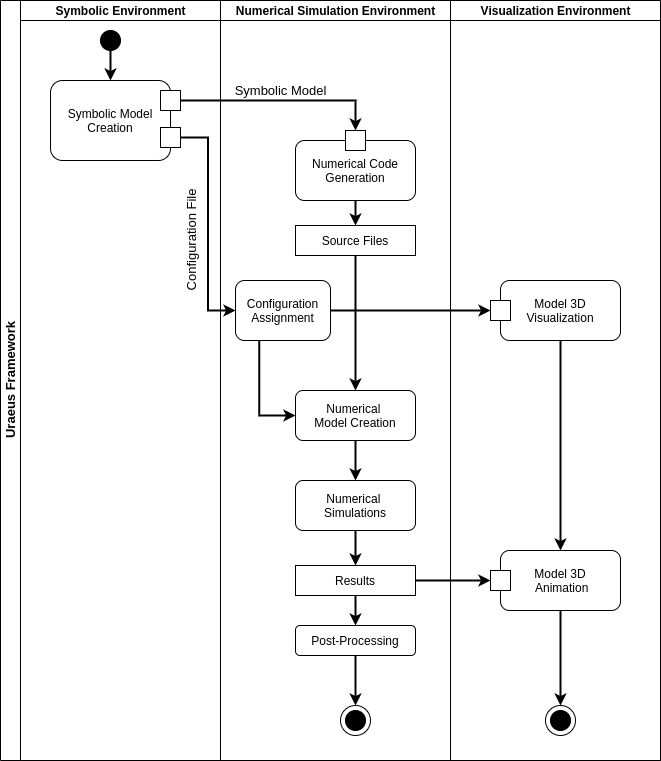Tutorials¶
This section presents some tutorials illustrating the process of creating standalone and template-based symbolic models.
The figure below shows a high-level activity diagram of a typical usage flow of the uraeus framework, where we have three swim-lanes representing a main layer of the three activity layers of the framework.
Here we are concerned with the first swim-lane that represents the symbolic environment layer and the symbolic model creation activity.

Symboilc Models¶
The uraeus.smbd python package provides two main types of symbolic models to be constructed, standalone models, and template-based models.
Standalone models stands for symbolic models that are fully described in one topology graph, where all the bodies and connections are already defined in the model graph, and therefore, the model is fully independent and does not need any other topological information.
Template-based models, on the other hand, are not fully described in one topology, as they need to be assembled with other templates to form a complete assembled topology. For example, this is the case for creating a full vehicle assembly, where we model the vehicle subsystems as templates, then we assemble them together to form the desired vehicle assembly.
The creation of template-based models’ database can be found in uraeus.fsae, which is an under-development multi-body systems database for formula-style vehicles implemented in the uraeus framework.